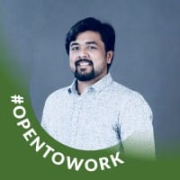

StreamSets and Talend Data Fabric are key players in the data integration sector. StreamSets is favored for its flexibility and ease of deployment, while Talend is appreciated for its extensive feature set, including advanced data governance.
Features: StreamSets focuses on real-time data processing, extensive connectivity to diverse data sources, and ease of use through a user-friendly interface. Talend Data Fabric provides robust data integration capabilities, extensive data governance tools, and multi-cloud data orchestration, accommodating comprehensive data management needs.
Room for Improvement: StreamSets could improve in handling larger volumes of complex data records and optimization for faster processing in such scenarios. Enhancements in their user interface responsiveness and documentation consistency are also beneficial. Talend Data Fabric might benefit from simplifying its deployment process and reducing complexity in multi-step configurations. Their pricing model could be more accessible for smaller organizations needing fewer features, and further optimizing their educational resources for quicker onboarding would be advantageous.
Ease of Deployment and Customer Service: StreamSets is known for its straightforward deployment, which allows rapid implementation with minimal technical barriers, complemented by responsive customer support. Talend Data Fabric offers comprehensive deployment processes with seamless integration across varied systems, supported by robust customer service and extensive educational materials, though its deployment can be time-intensive.
Pricing and ROI: StreamSets offers competitive pricing with low initial setup costs, delivering favorable ROI due to efficient deployment and operations. Talend Data Fabric, at a higher price point, justifies its cost through its extensive features and value-added services, often leading to significant long-term ROI for users managing complex data environments.


StreamSets is a data integration platform that enables organizations to efficiently move and process data across various systems. It offers a user-friendly interface for designing, deploying, and managing data pipelines, allowing users to easily connect to various data sources and destinations. StreamSets also provides real-time monitoring and alerting capabilities, ensuring that data is flowing smoothly and any issues are quickly addressed.
Talend, a leader in cloud data integration and data integrity, enables companies to transform by delivering trusted data at the speed of business.
Talend Data Fabric offers a single suite of apps that shorten the time to trusted data. Users can collect data across systems; govern it to ensure proper use, transform it into new formats and improve quality, and share it with internal and external stakeholders.
Over 3,000 global enterprise customers have chosen Talend to help them turn all their raw data into trusted data to make business decisions with confidence — including GE, HP Inc., and Domino’s.
We monitor all Data Integration reviews to prevent fraudulent reviews and keep review quality high. We do not post reviews by company employees or direct competitors. We validate each review for authenticity via cross-reference with LinkedIn, and personal follow-up with the reviewer when necessary.